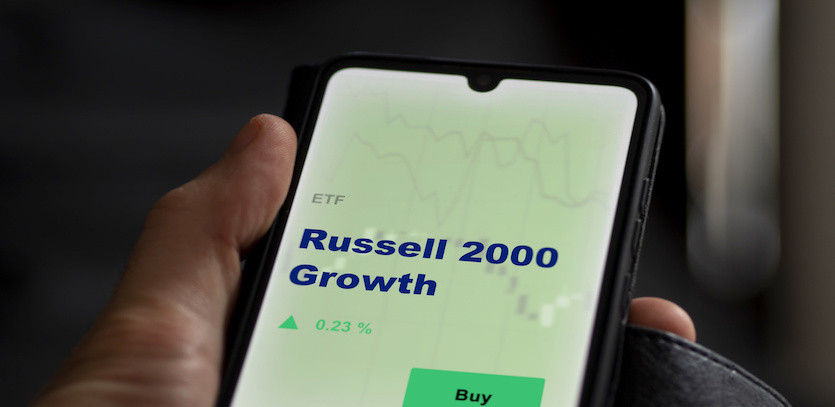Unveiling the Russell 2000
The Russell 2000 index, recognized as a prominent barometer of small-cap company performance in the United States, keeps a tab on 2,000 publicly traded firms of lesser market value. Although the S&P 500, representing the top 500 publicly traded firms in the U.S., is more commonly recognized, the Russell 2000 is a critical benchmark worth understanding. Its primary focus is to track the collective performance of mid to small-cap stocks, signifying approximately 7% of the Russell 3000's overall market capitalization. Essentially, it comprises the smaller two-thirds of the companies featured in the broader Russell 3000 index, which represents nearly 98% of all U.S. publicly traded stocks.
As of the first quarter of 2023, Iridium Communications, ShockWave Medical, and Emcor Group Inc. emerged as the top three holdings in the index. The majority of the index's weight is in the industrial sector, followed by healthcare and financial sectors.
Origin and Composition of the Russell 2000
The Russell 2000 index, initiated in 1984 by the Frank Russell Company, is a segment of the larger Russell 3000. The latter aims to mirror the entire U.S. stock market and represents approximately 98% of the country’s investable equity market.
The Russell 3000 index includes the 3,000 largest public companies according to market capitalization, while the Russell 2000 tracks the smaller 2,000 companies within this. As of January 2022, the average weighted market cap for a Russell 2000 company was $3.13 billion. The primary sectors of the Russell 2000 index were broken down at the conclusion of 2021.
Understanding the sector-wise allocation of these indices can guide your investment strategy. For example, if you have investments in a fund tracking the Russell 2000 and plan to invest in more stocks, it may not be ideal to buy shares in a publicly traded bank because the Russell 2000 has 15.8% of its holdings in financial stocks. Instead, diversifying your investment by purchasing shares in sectors not heavily represented in the fund could be a better strategy.

Russell 2000 Performance Review
When we look at the total annual returns of the Russell 2000 and compare it with the Russell 1000 (representing the large-cap segment of the Russell 3000) and the S&P 500 since 2000, we notice interesting trends.
The Russell 2000 typically exhibits more volatility as the value of small-cap stocks can fluctuate rapidly. The iShares Russell 2000 ETF beta, a measure of volatility, has consistently hovered around 1.24 for several years (a beta of 1.0 represents the market's average risk level).
Two sub-indices of the Russell 2000 have been established to track the performance of companies with unique attributes sought after by specific investor types:
- The Russell 2000 Growth Index: Measures performance of Russell 2000 companies with higher price-to-value ratios and higher predicted growth values.
- The Russell 2000 Value Index: Tracks the performance of Russell 2000 companies with lower price-to-book ratios and lower predicted growth values.
Russell 2000 vs. S&P 500
The small-cap Russell 2000 tends to align closely with the large-cap S&P 500, although there are instances when its movements are much more pronounced. This is mainly due to the inherently volatile nature of small-cap stocks that react more dramatically to market shifts. Each index is most reliable during specific economic phases, so many investors diversify by purchasing shares of both a Russell 2000 fund or ETF and an index fund for the S&P 500.
How to Invest in the Russell 2000
Investors seeking exposure to the Russell 2000's vast array can invest in a mutual fund or ETF that mirrors the index. Two popular options include the iShares Russell 2000 ETF [NYSE: IWM] and the Vanguard Russell 2000 ETF [NYSE: VTWO].
Top Holdings of the Russell 2000
As of Q1 2023, the top 10 holdings in the Russell 2000 Index by market capitalization comprised:
- Iridium Communications (IRDM)
- ShockWave Medical (SWAV)
- Emcor Group Inc. (EME)
- Crocs Inc. (CROX)
- Texas Roadhouse Inc. (TXRH)
- Saia Inc. (SAIA)
- Inspire Medical Systems (INSP)
- Rbc Bearings Inc. (RBC)
- Kinsale Capital Group (KNSL)
- Apellis Pharmaceuticals (APLS)
Potential Limitations of the Russell 2000
Investors aiming for access to small-cap stocks frequently monitor the Russell 2000. However, it's essential to remember that hundreds of smaller “micro-cap” companies are not included in the index. These companies, while being among the fastest-growing stocks, represent the smallest entities available on the market.
Over-reliance on the Russell 2000 can lead to a lack of diversification across industries and sectors. For instance, the index typically leans heavily towards the financials, healthcare, technology, and industrial sectors, yet it offers limited exposure to companies in the communications and materials sectors.
Launched in 1984, the Russell 2000 is a prominent benchmark for U.S. small-cap stocks. It consists of the smallest 2,000 companies in the Russell 3000, representing approximately 98% of the U.S.' publicly traded stocks. The Russell 2000 is rebalanced annually in June, with companies added or removed based on specific criteria.





